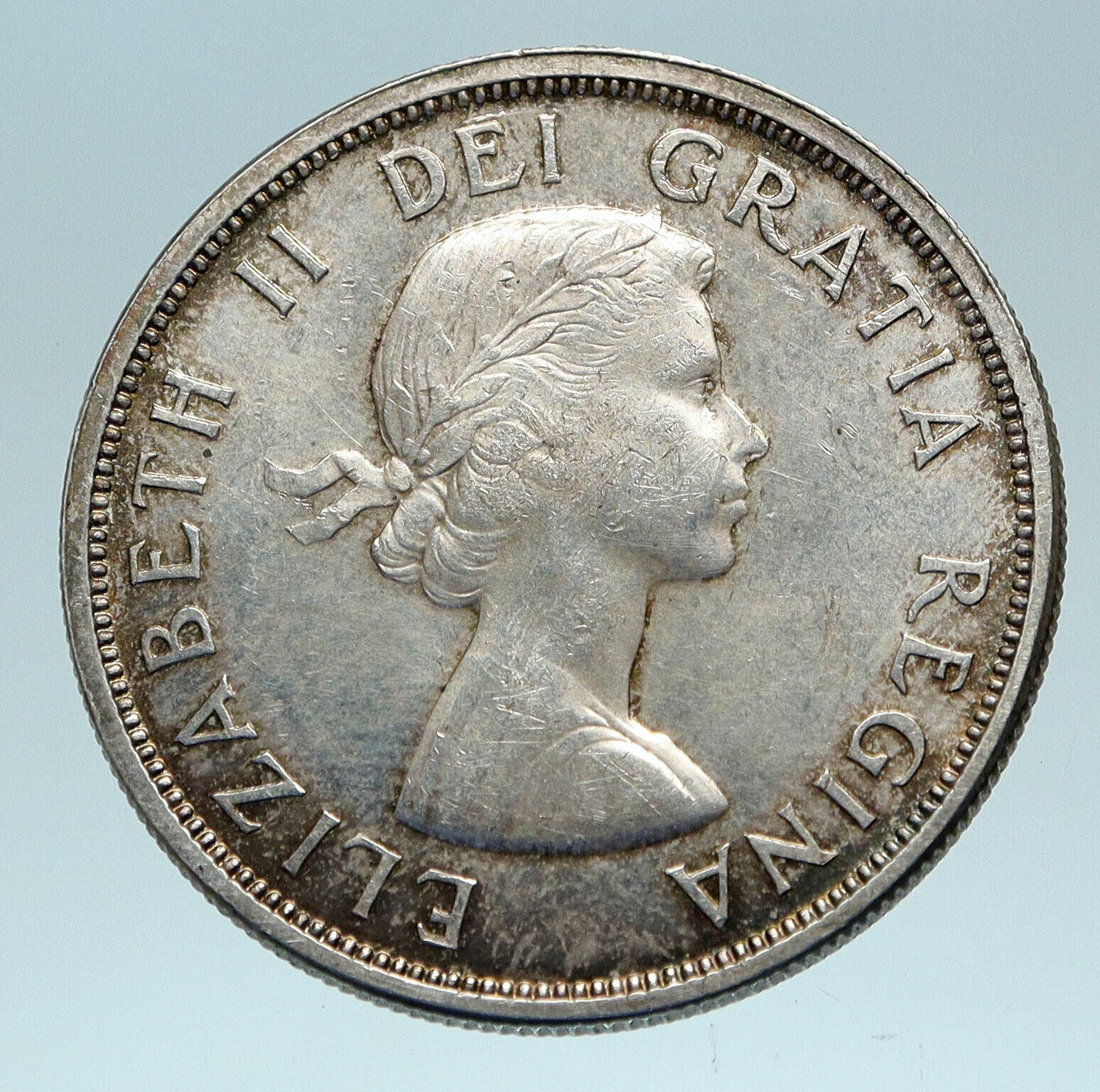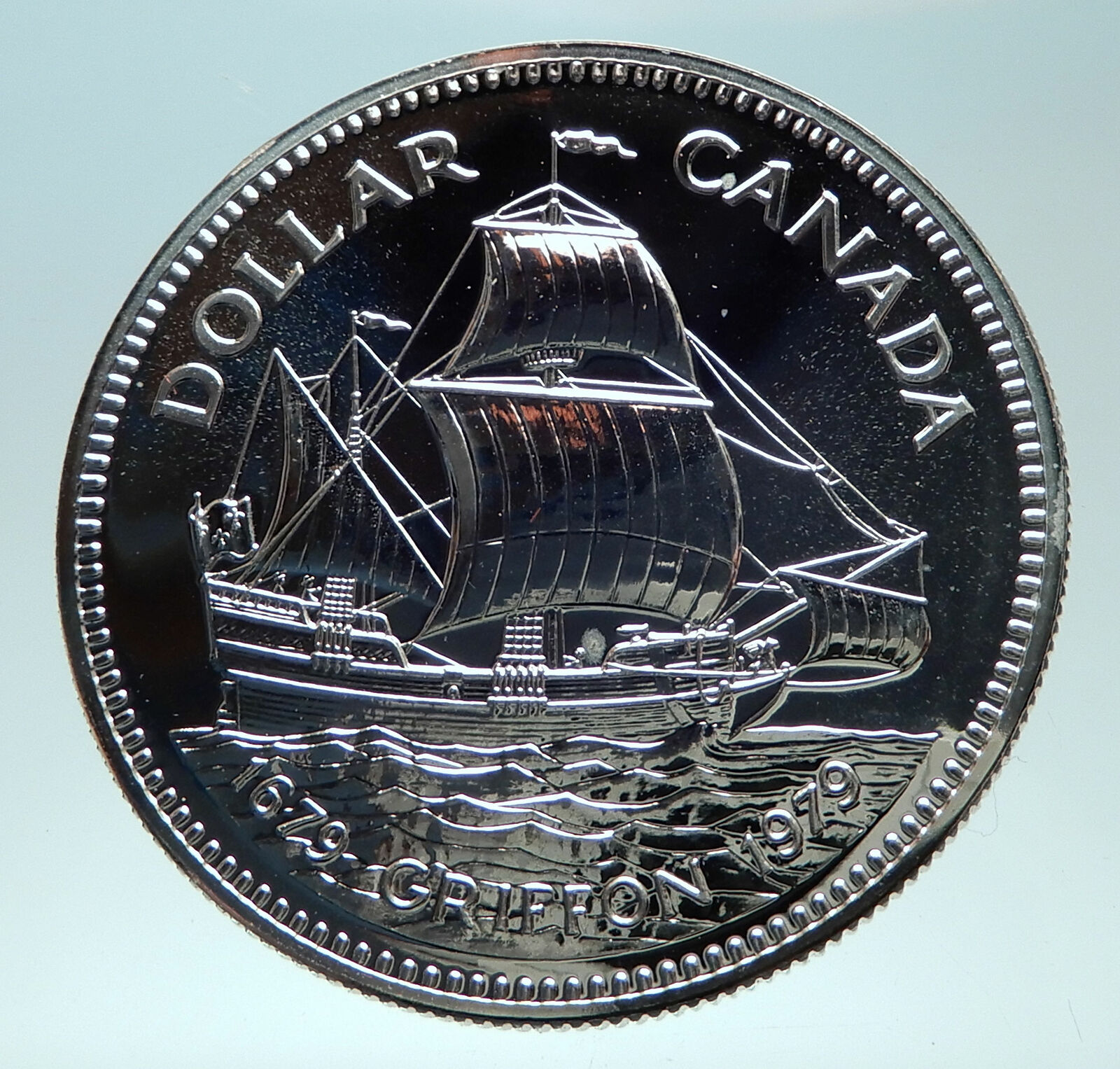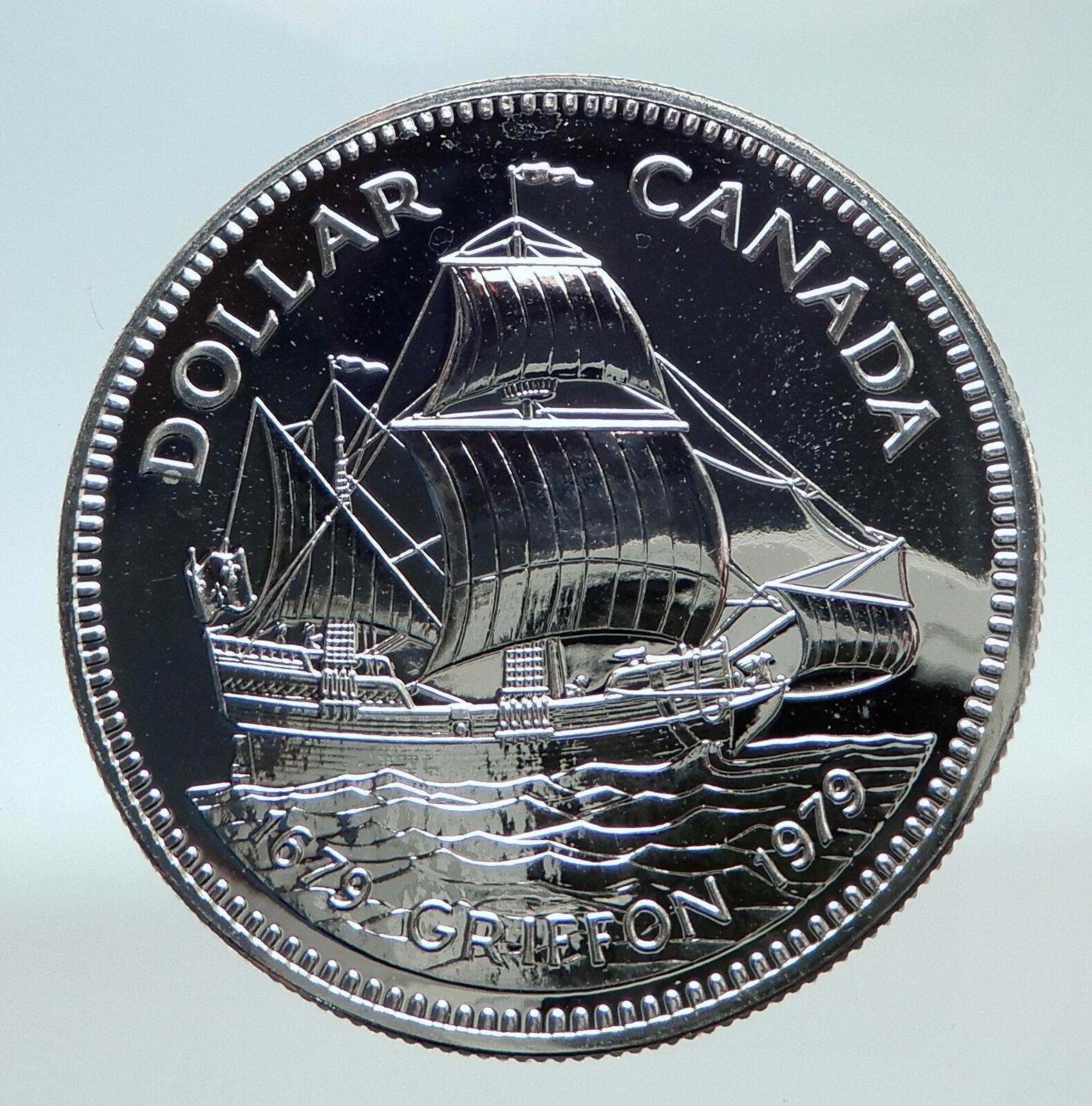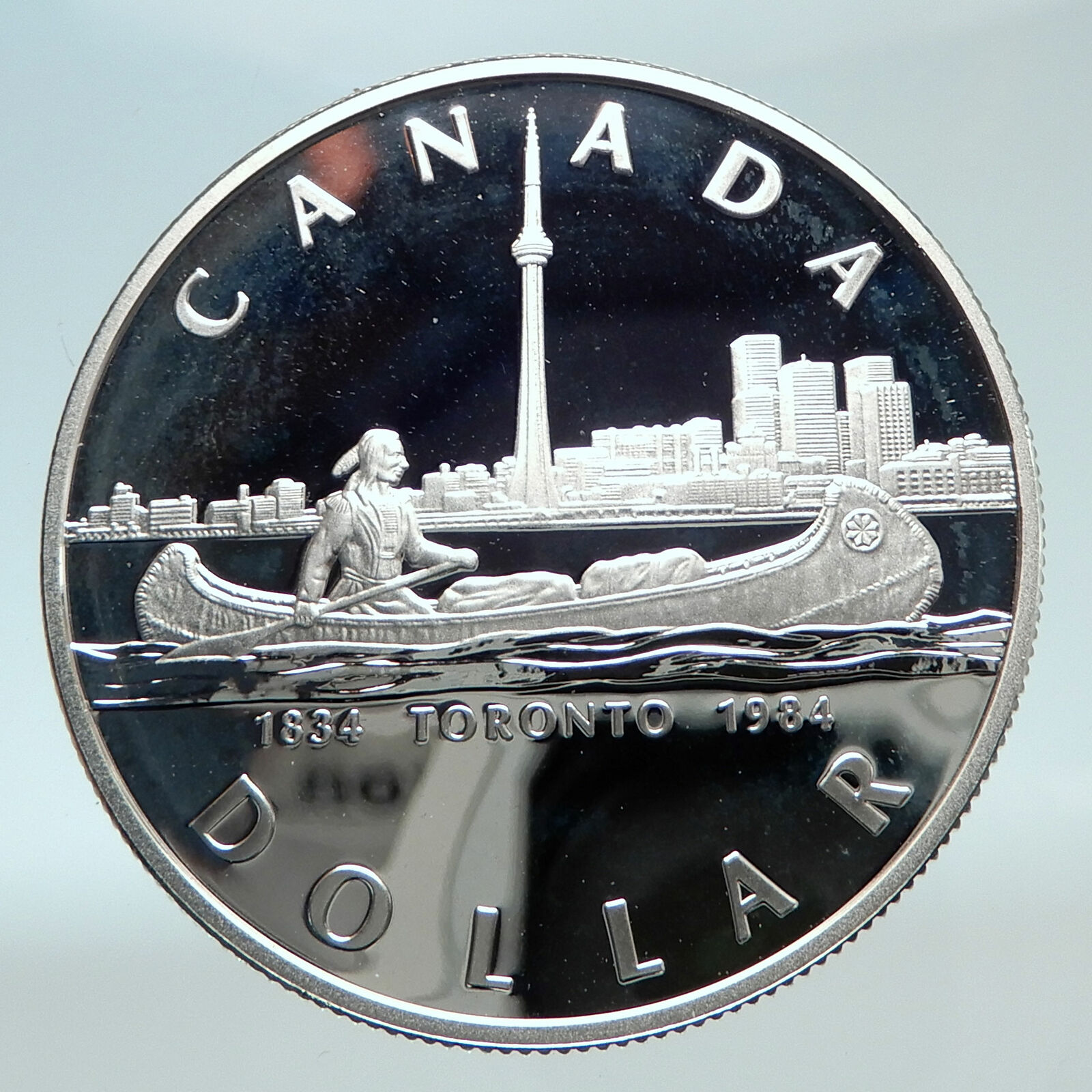|
Canada under Elizabeth II – Queen: 6 February 1952–present
Proof Set of Eight Coins
225th Anniversary of the Voyage of Juan Perez
This set includes a Commemorative Dollar, 2 Dollars, 1 Dollar, 50 Cents, 25 Cents, 10 Cents, 5 Cents and 1 Cent coins
The Dollar is:
1999 Proof Silver Dollar 35mm (25.18 grams) 0.925 Silver (0.7487 oz. ASW)
Reference: KM# 356 | Engraver: Dora de Pédery-Hunt, David Craig
ELIZABETH II D·G·REGINA, Queen Elizabeth II facing right.
1774 1999 CANADA · DOLLAR, Canoes of the Haida (original inhabitants of the Queen Charlotte Islands) are approaching the Santiago, the frigate of Juan Perez.
You are bidding on the exact item pictured, provided with a Certificate of Authenticity and Lifetime Guarantee of Authenticity.
Juan José Pérez Hernández (born Joan Perés ca. 1725 – November 3, 1775), often simply Juan Pérez, was an 18th-century Spanish explorer. He was the first known European to sight, examine, name, and record the islands near present-day British Columbia, Canada. Born in Palma de Mallorca, Spain, he first served as a piloto in western Spanish colonial North America on Manila galleons en route to and from the Philippines in the Spanish East Indies. In 1768, he was assigned to the Pacific port of San Blas, in the Viceroyalty of New Spain (present day Mexico), and acquired the rank of ensign (alférez).
Confident of their territorial claims, the Spanish Empire did not explore or settle the northwest coast of North America in the 250 years after being claimed for the crown by Vasco Núñez de Balboa. By the late 18th century; however, learning of Russian and British arrivals along the Pacific Northwest and Alaskan coasts, Spain finally grew sufficiently concerned about their claims to the region and set out to discover the extent of any colonial Russian and British encroachment.
In early 1774, the Viceroy of New Spain, Antonio María Bucareli y Ursúa, commanded Pérez to explore the Pacific coast with the objective of reaching 60° north latitude (about the latitude of present-day Cordova, Alaska) to discover possible Russian America and British settlements and to re-assert the long-standing Spanish claim to the Pacific Northwest. Rumors of Russian fur traders caused the Spanish to send the frigate Santiago north under the command of Pérez, with a crew mostly from New Spain. 3] Pérez was given explicit instructions to treat all indigenous peoples with respect, and to establish friendly relations with any encountered.
In July 1774, he reached 54°40′ north latitude, just off the northwestern tip of Langara Island, one of the islands of Haida Gwaii. There he had an interaction with a group of Haida natives, but he did not go ashore. Due to a lack of provisions and the poor health of his crew, Pérez turned south at this point despite the viceroy’s orders to attain 60° north. He reached Nootka Sound on August 7, 1774 (at about 49.6° north latitude), part of today’s Vancouver Island and had an extended set of interactions with the indigenous population, including the first trade of trade goods. Again, he did not go ashore, this time because of bad weather that almost ran his ship aground.
Pérez was accompanied by Fray Juan Crespí and his assistant Fray Tomas de la Pena Y Saravia. Pérez gave the name of Cerro Nevado de Santa Rosalía (“Snowy Peak of Saint Rosalia”) to present day Mount Olympus in the U.S. state of Washington.
Pérez continued south to the Presidio of Monterey, Las Californias, which he reached on August 28, 1774. After a brief stay, he continued on to reach San Blas on November 5, 1774, thus completing his expedition.
In 1775, a second expedition under Bruno de Heceta and Juan Francisco de la Bodega y Quadra was organized. Pérez participated as piloto of Heceta’s ship, the Santiago.
Pérez died on the return journey, on November 3, 1775, between Monterey, California and San Blas.
.svg/220px-Canada_(orthographic_projection).svg.png)  Canada is a country, consisting of ten provinces and three territories, in the northern part of the continent of North America. It extends from the Atlantic to the Pacific and northward into the Arctic Ocean, covering 9.98 million square kilometres (3.85 million square miles) in total, making it the world’s second-largest country by total area and the fourth-largest country by land area. Canada’s common border with the United States forms the world’s longest land border. Canada is sparsely populated overall, the majority of its land territory being dominated by forest and tundra as well as the mountain range of the Rocky Mountains; about four-fifths of the population live near to the southern border. The majority of Canada has a cold or severely cold winter climate, but southerly areas are warm in summer. Canada is a country, consisting of ten provinces and three territories, in the northern part of the continent of North America. It extends from the Atlantic to the Pacific and northward into the Arctic Ocean, covering 9.98 million square kilometres (3.85 million square miles) in total, making it the world’s second-largest country by total area and the fourth-largest country by land area. Canada’s common border with the United States forms the world’s longest land border. Canada is sparsely populated overall, the majority of its land territory being dominated by forest and tundra as well as the mountain range of the Rocky Mountains; about four-fifths of the population live near to the southern border. The majority of Canada has a cold or severely cold winter climate, but southerly areas are warm in summer.
The land now called Canada has been inhabited for millennia by various Aboriginal peoples. Beginning in the late 15th century, British and French colonies were established on the region’s Atlantic coast. As a consequence of various conflicts, the United Kingdom gained and lost North American territories until left, in the late 18th century, with what mostly comprises Canada today. Pursuant to the British North America Act, on July 1, 1867, three colonies joined to form the autonomous federal Dominion of Canada. This began an accretion of provinces and territories to the new self-governing Dominion. In 1931, Britain granted Canada near total independence with the Statute of Westminster 1931 and full sovereignty was attained when the Canada Act 1982 severed the vestiges of legal dependence on the British parliament.
Canada is a federal parliamentary democracy and a constitutional monarchy, Queen Elizabeth II being the current head of state. The country is officially bilingual at the federal level. It is one of the world’s most ethnically diverse and multicultural nations, the product of large-scale immigration from many countries, with a population of approximately 35 million as of 2015. Its advanced economy is the eleventh largest in the world, relying chiefly upon its abundant natural resources and well-developed international trade networks. Canada’s long and complex relationship with the United States has had a significant impact on its economy and culture.
Canada is a developed country and one of the wealthiest in the world, with the tenth highest nominal per capita income globally, and the eighth highest ranking in the Human Development Index. It ranks among the highest in international measurements of government transparency, civil liberties, quality of life, economic freedom, and education. Canada is a Commonwealth Realm member of the Commonwealth of Nations, a member of the Francophonie, and part of several major international and intergovernmental institutions or groupings including the North Atlantic Treaty Organization, the G8, the Group of Ten, the G20, the North American Free Trade Agreement and the Asia-Pacific Economic Cooperation forum.
|







.svg/220px-Canada_(orthographic_projection).svg.png)
 Canada is a country, consisting of ten provinces and three territories, in the northern part of the continent of North America. It extends from the Atlantic to the Pacific and northward into the Arctic Ocean, covering 9.98 million square kilometres (3.85 million square miles) in total, making it the world’s second-largest country by total area and the fourth-largest country by land area. Canada’s common border with the United States forms the world’s longest land border. Canada is sparsely populated overall, the majority of its land territory being dominated by forest and tundra as well as the mountain range of the Rocky Mountains; about four-fifths of the population live near to the southern border. The majority of Canada has a cold or severely cold winter climate, but southerly areas are warm in summer.
Canada is a country, consisting of ten provinces and three territories, in the northern part of the continent of North America. It extends from the Atlantic to the Pacific and northward into the Arctic Ocean, covering 9.98 million square kilometres (3.85 million square miles) in total, making it the world’s second-largest country by total area and the fourth-largest country by land area. Canada’s common border with the United States forms the world’s longest land border. Canada is sparsely populated overall, the majority of its land territory being dominated by forest and tundra as well as the mountain range of the Rocky Mountains; about four-fifths of the population live near to the southern border. The majority of Canada has a cold or severely cold winter climate, but southerly areas are warm in summer.




